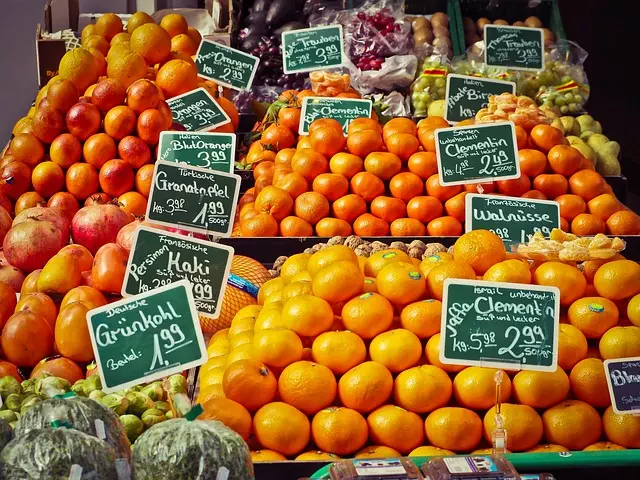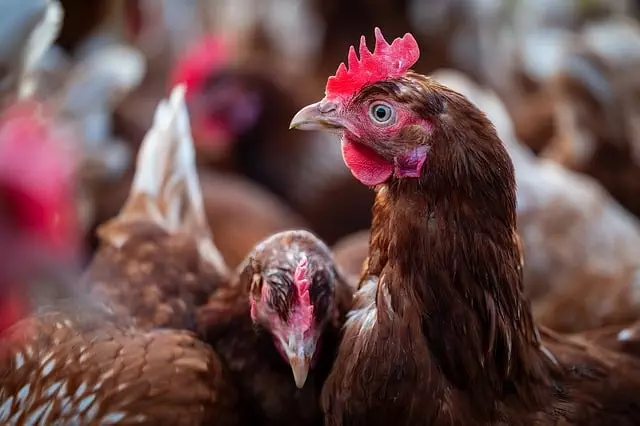Yard waste removal and recycling through composting is a sustainable practice that benefits both gardeners and the environment by reducing landfill waste and creating nutrient-rich soil amendments. This process enhances soil structure, water retention, and supports a thriving microbial community while playing a key role in carbon sequestration to mitigate climate change. Composting also represents a cost-effective, closed-loop system that recycles nutrients back into the soil, eliminating the need for synthetic fertilizers and safeguarding local water sources from contamination. Gardeners can engage in this eco-friendly activity to manage yard waste, transforming potential trash into valuable compost that supports sustainable gardening and environmental health. Innovative composting techniques like aerated static piles (ASPs) and vermicultural composting using red wigglers are effective yard waste removal methods, offering efficient ways to recycle organic matter on both large and small scales, thereby contributing to the reduction of yard waste in municipal solid waste streams and promoting environmentally friendly disposal options. Yard waste removal and recycling through composting is a practical solution for sustainable waste management with numerous environmental benefits.
Embark on a greener path with compost creation for garden enthusiasts, an enlightening guide that delves into the transformative process of yard waste removal and recycling. This article unravels the multifaceted benefits of composting your garden’s organic matter, offering insights into what constitutes a thriving compost pile. With a step-by-step approach to initiating your own compost bin, learn the nuances of what can and cannot be composted to foster soil health and enhance your garden’s vitality. Advanced techniques are also explored for those looking to refine their composting methods, ensuring efficient yard waste removal and a bountiful garden ecosystem.
- Understanding the Benefits of Composting Yard Waste
- Essential Components for a Balanced Compost Pile
- Step-by-Step Guide to Starting Your Own Compost Bin
- Yard Waste Recycling: What Can and Cannot Be Composted
- Maintaining Your Compost Pile for Optimal Garden Fertility
- Advanced Composting Techniques for Efficient Yard Waste Removal
Understanding the Benefits of Composting Yard Waste

Participating in yard waste removal and recycling through composting is a sustainable practice that offers numerous benefits to garden enthusiasts. By composting organic materials such as leaves, grass clippings, and garden trimmings, you not only reduce the volume of waste sent to landfills but also create a nutrient-rich soil amendment for your garden. This process enhances soil structure, improves water retention, and encourages beneficial soil microorganisms, leading to healthier plant growth. Composting yard waste also contributes to carbon sequestration, as organic matter in the compost helps to store carbon in the soil, mitigating the effects of climate change.
Moreover, recycling yard waste through composting promotes a closed-loop system where nutrients are returned to the soil, reducing the need for synthetic fertilizers and chemicals. This not only saves money but also protects local water sources from contamination that can occur with improper waste disposal. Additionally, composting can be a rewarding activity for gardeners, providing a hands-on approach to improving their garden’s health naturally. It’s a practical solution for managing yard waste, transforming what was once considered trash into valuable material that supports plant growth and enriches the soil. Implementing yard waste removal and recycling practices through composting is a simple yet effective way to contribute to environmental sustainability while enhancing your garden’s vitality.
Essential Components for a Balanced Compost Pile

Garden enthusiasts looking to enrich their soil naturally can turn to compost creation as a sustainable and productive practice. A balanced compost pile is the cornerstone of healthy garden growth, and it starts with understanding the essential components that make up this natural fertilizer. Yard waste removal and recycling play a pivotal role in this process, providing a rich source of organic matter that breaks down into humus, which in turn improves soil structure and fertility.
The fundamental elements of a balanced compost pile include a mix of high-nitrogen ‘green’ materials, such as kitchen scraps (fruit and vegetable peels, coffee grounds with filters), grass clippings, and manure, with lower-nitrogen ‘brown’ materials, like dried leaves, straw, shredded paper, and wood chips. These materials contribute carbon, which is crucial for the decomposition process. Additionally, yard waste removal and recycling efforts should aim to balance these components to ensure a steady supply of both nitrogen and carbon. A well-maintained compost pile will heat up as microorganisms break down the organic matter, indicating an active and balanced composting process. Regularly turning the compost and ensuring adequate moisture levels will further optimize the decomposition, leading to a nutrient-rich compost that can be used to enhance garden soil. This not only reduces waste but also promotes a more sustainable approach to gardening by recycling organic material back into the land.
Step-by-Step Guide to Starting Your Own Compost Bin

Beginning a compost bin is an eco-friendly approach to yard waste removal and recycling. This process not only reduces landfill waste but also enriches your garden soil with valuable nutrients. To initiate your own composting journey, select a convenient location in your yard that is easily accessible for adding waste and monitoring the decomposition process. Ensure the site is flat to facilitate turning of the compost pile, which is crucial for aeration and balanced compost formation.
Start by gathering organic materials such as fruit and vegetable scraps, coffee grounds with filters, eggshells, and yard waste like grass clippings and leaves. Avoid including meat, dairy, or oily substances that can attract pests or create unpleasant odors. Next, construct your compost bin using enclosed containers like plastic bins, wooden structures, or even a simple pile if you prefer a more natural approach. The size of the bin should cater to your gardening needs and the amount of yard waste you generate. Regularly add green waste for nitrogen and brown waste for carbon to maintain a balanced compost ratio. By following these steps and paying attention to moisture levels and aeration, you’ll be on your way to efficient yard waste removal and recycling through composting, resulting in rich, nutrient-dense soil for your garden. Remember to turn the compost periodically to ensure even decomposition and to break down any large pieces of material. This hands-on approach not only accelerates the composting process but also prevents the development of undesirable odors or pathogens.
Yard Waste Recycling: What Can and Cannot Be Composted

Yard waste removal and recycling are integral components of sustainable gardening practices. Composting organic matter not only enriches the soil but also diverts waste from landfills, reducing greenhouse gas emissions. When composting yard waste, it’s crucial to differentiate between what can and cannot be composted to ensure a successful compost pile.
Eligible materials for composting typically include a variety of plant-based debris such as fallen leaves, grass clippings, and garden prunings. These organic materials break down over time and return valuable nutrients to the soil. Woody branches and twigs, however, may take longer to decompose and can be slower in breaking down if they are too large or woody. To expedite their decomposition, these materials can be chipped or shredded before composting. Kitchen scraps like fruit peels and coffee grounds also make excellent compost ingredients, as they add nitrogen and improve the overall health of the compost.
On the other hand, certain yard waste items should not be added to a compost pile. Invasive plant materials, diseased or pest-infested plant parts, and any treated wood or garden products should be avoided. These can introduce harmful organisms or chemicals into the compost, which may be detrimental to your garden in the long run. Yard waste removal services often specify what cannot be composted to prevent contamination of the compost stream. It’s important to check with local regulations and guidelines to ensure that you are composting materials appropriately and responsibly.
Maintaining Your Compost Pile for Optimal Garden Fertility

Composting is a sustainable practice that transforms yard waste removal into a valuable resource for garden enthusiasts. To maintain an optimal compost pile for garden fertility, it’s crucial to balance the carbon-to-nitrogen ratio effectively. Ideally, greens like kitchen scraps and coffee grounds should be balanced with browns such as dried leaves and straw. Regularly turning the compost pile increases oxygen flow, which speeds up decomposition and reduces odors. Ensure that the compost is moist but not soggy; moisture levels should be similar to a wrung-out sponge. Monitoring these conditions helps in breaking down organic matter efficiently, creating nutrient-rich humus that enriches your garden soil.
For those looking to recycle yard waste, it’s important to regularly inspect the compost pile for any materials that decompose slowly or do not break down at all, such as large woody pieces or certain types of plastic. These should be removed and disposed of properly. Additionally, maintaining an appropriate size for your compost pile can optimize its temperature and speed up the decomposition process. By keeping the compost active and well-managed, you’re not only contributing to a greener environment by reducing waste but also providing your garden with a nutrient-dense medium that supports healthy plant growth. Regularly checking the compost for balance and aeration will ensure that it serves as an effective tool in maintaining soil fertility and promoting sustainable gardening practices.
Advanced Composting Techniques for Efficient Yard Waste Removal

Yard waste, a significant component of municipal solid waste, can be effectively managed through advanced composting techniques, which not only aid in efficient yard waste removal but also contribute to recycling organic matter back into the soil. One such technique is the use of aerated static piles (ASPs), where oxygen is intentionally introduced into the composting material at regular intervals to speed up the decomposition process. This method is particularly beneficial for garden enthusiasts dealing with large volumes of yard waste, as it minimizes odor and pest issues while promoting a balanced microbial population.
Another sophisticated approach to composting yard waste is vermicultural composting, which involves the use of worms, primarily red wigglers, to break down organic matter. These worms thrive in environments with a carbon-to-nitrogen ratio of about 25:1 to 30:1 and can process food scraps and yard waste into nutrient-rich compost at an impressive rate. This method not only recycles organic material but also produces a valuable end product that enriches garden soil, improving its structure and fertility. For those with space constraints, vermiculture can be carried out on a small scale using worm bins, making it an accessible option for urban gardeners as well. Both ASPs and vermicultural composting offer efficient yard waste removal solutions that reduce the need for landfill disposal and promote sustainable waste management practices.
Gardening enthusiasts can significantly enhance their garden’s health and sustainability by engaging in compost creation. This article has outlined the myriad benefits of composting yard waste, detailed the key ingredients for a thriving compost pile, and provided a straightforward guide to initiating your own compost bin. Understanding what can and cannot be composted is crucial for effective yard waste recycling, ensuring that your efforts contribute positively to soil fertility without introducing harmful elements. Regular maintenance of your compost pile, as discussed, further ensures its efficacy in garden enhancement. Advanced techniques for efficient yard waste removal provide an additional layer of expertise for the dedicated gardener. By embracing these practices, you not only enrich your garden but also play a vital role in environmental stewardship through recycling and reducing the need for external fertilizers and waste disposal services.


